Alumina Refractory Brick
Articles
Resco Products provides a variety of alumina refractory brick for all applications and working conditions. View our full list below or select one of the following that meets your requirements. Available alumina refractory bricks include AMG Brick, FireClay, High Alumina, Phosphate Bonded High Alumina.
Types of Alumina Refractory Brick
AMG Brick:
For steel ladle applications, resin-bonded alumina magnesia carbon bricks have become an important refractory lining product development. When blended with various levels of magnesia and higher qualities of fused alumina these brick qualities offer cost-effective refractory performance for the steel ladle.
Best practice for many ladles today is the resin-bonded alumina-magnesia-graphite brick composition (AMG), used in the ladle barrel and bottom area. AMG compositions form in-situ magnesia-alumina spinel during service, which tightens brick joints, limits joint erosion, and decreases joint penetration by the molten steel. Resco produces several LADLEMAX brick products that have varying compositions relating to magnesia, carbon, and addictive contents.
Consult your Resco sales representative or industry specialist to determine the appropriate LADLEMAX AMG composition for your ladle practice.
FireClay Brick
Fireclay refractory primarily consists of hydrated aluminum silicates with minor proportions of other materials. Fireclay brick content ranges from 18 to 44% alumina and 50-80% silica. Super duty bricks alumina content of 40-44% provides good strength and stability of volume. Super duty fireclay brick can have several modifications including higher firing temperatures than normal products. Higher firing enhances the strength of the brick, stabilizes their volume and mineral composition, increases their resistance to fluxing, and renders them practically inert to disintegration by carbon deposition in atmospheres containing carbon monoxide gas.
High Alumina Brick:
High alumina refractories are characterized by alumina (Al2O3) content between approximately 50% to as high as 99%. High alumina bricks are widely used throughout industry in many types of applications. Furnaces using high alumina brick include aluminum production, calcining kilns, iron melting and handling, chemical incineration, and kilns producing lime and cement.
Characteristics of high alumina brick include excellent refractoriness, cost-effective performance, high strength, and abrasion resistance, resistance to acidic slags, and strong resistance to thermal shock. The physical properties of high alumina brick refractories can be tailored to enhance performance in certain applications. For example, resistance to penetration and wetting by molten aluminum can be improved with a phosphate bond. Consult your Resco sales representative or industry specialist to determine appropriate high alumina brick for your application.
Phosphate Bonded High Alumina Brick:
High alumina brick refractories can have two bond systems, ceramic, and phosphate. Phosphate brick is readily recognized by a phosphorus pentoxide (P2O5) content on their data sheet of between about 3% and 6%. A phosphate chemical addition reacts with free alumina in the brick mix to form an aluminum ortho-phosphate chemical bond during medium temperature curing. Firing a phosphate-bonded brick to higher temperatures results in a composition that has both phosphate and a ceramic bond.
Phosphate-bonded high alumina brick is preferred in many aluminum furnace linings because the phosphate causes the brick to be resistant to wetting and penetration by molten aluminum. Phosphate-bonding also improves the refractory properties by increasing density, lowering porosity, increasing strength, and abrasion resistance. Enhanced physical strength and abrasion resistance make phosphate-bonded brick compositions preferred in abrasive applications, including pebble lime kiln feed ends and applications that feature abrasive dust entrained in a high-velocity gas stream.
A Resco sales representative or industry applications specialist can help you select the appropriate alumina brick for your application.

